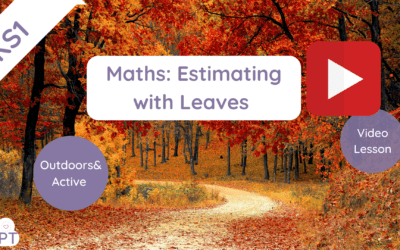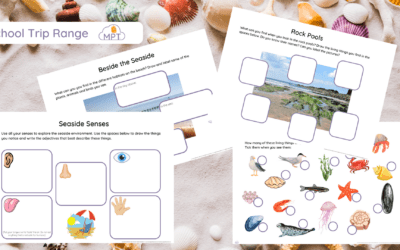What does this resource include? Three differentiated sheets to link to Year 1 Animal, including humans scheme of...
Testing Materials Year 2
Jan 24, 2023
What does this resource include? 3 x differentiated sheets for Testing Materials Year 2. Forms part f the Year...
Year 1 Materials Outdoor Sheet
Jan 23, 2023
What does this resource include? 3 x differentiated sheets to help take materials outside. This is part of a scheme...
Maths Estimating Year 1 (5&6yrs)
Dec 19, 2022
What does this video resource include? 1 x Vlog describing activities you can do to enhance your maths session in...
The MPT Prospectus
Dec 5, 2022
The MPT Prospectus What does this resource include? 1 x 27-page PDF document explaining the services w have at MPT...
Pond Dipping (KS1)
Nov 15, 2022
What does this resource include? 3 x Activity Sheets for Pond Dipping How can I use this resource? Use it as a...
Identifying Trees (KS1)
Nov 15, 2022
What does this resource include? 2 x Activity sheets to do outside How can I use this resource? Include within...
Identifying Living Things (KS1)
Nov 15, 2022
What does this resource include? 4 x Activity sheets to do outside How can I use this resource? Include within...
EYFS&KS1: Autumn Outdoor Continuous Provision
Oct 18, 2022
What does this pack include? 1 Vlog giving you tips on how you can use leaves in autumn for outdoor continuous...
(KS1) Estimating: Maths
Oct 18, 2022
What does this resource include? 1 Vlog Giving you tips on how to take estimation outside in autumn at KS1 How can I...
School Trips – Beach Resources Pack
Oct 4, 2022
What does this pack include? 4 Templates to engage your class with outdoor activities at the beach or seaside. How...
Pond Dipping Identification Sheet ( Differentiated) KS1
Jun 30, 2022
Use this Pond Dipping Identification Sheet to give your Science the hands on expereince children need to put their...
Muddy Lanyard Challenges – 2D and 3D shapes
May 4, 2022
The Muddy Puddle Teachers are all over these Muddy Lanyard Challenges - 2D and 3D shapes, you need some too! A new...
Phase 5 phonics sounds in letters
May 4, 2022
What do our teachers love about our Muddy Phonics lessons? The kids love i. ! Does not feel like learning when you...
Phase 3 Phonics Sounds in Leaves
May 4, 2022
Use Phase 3 Phonics Sounds in Leaves to add some guided phonics in your tuff spots or alternatively use it as an...
Muddy Lanyard Challenges Doubles to 20
May 4, 2022
Our Muddy Lanyard Challenges Doubles to 20 are a big favourite used as a stand-alone lesson, extension activity or for...
Capital Letters using Leaves (Flashcard)
May 4, 2022
Capital Letters Outdoor Learning. Use Capital Letters using Leaves (Flashcard) on tuff spots with leaves so that...
Subitising Numbers 0-10 (Nature Posters) (Flashcard)
May 4, 2022
Use Subitising Numbers 0-10 (Nature Posters) to gather up loose parts play that will encourage children to add nature...





























